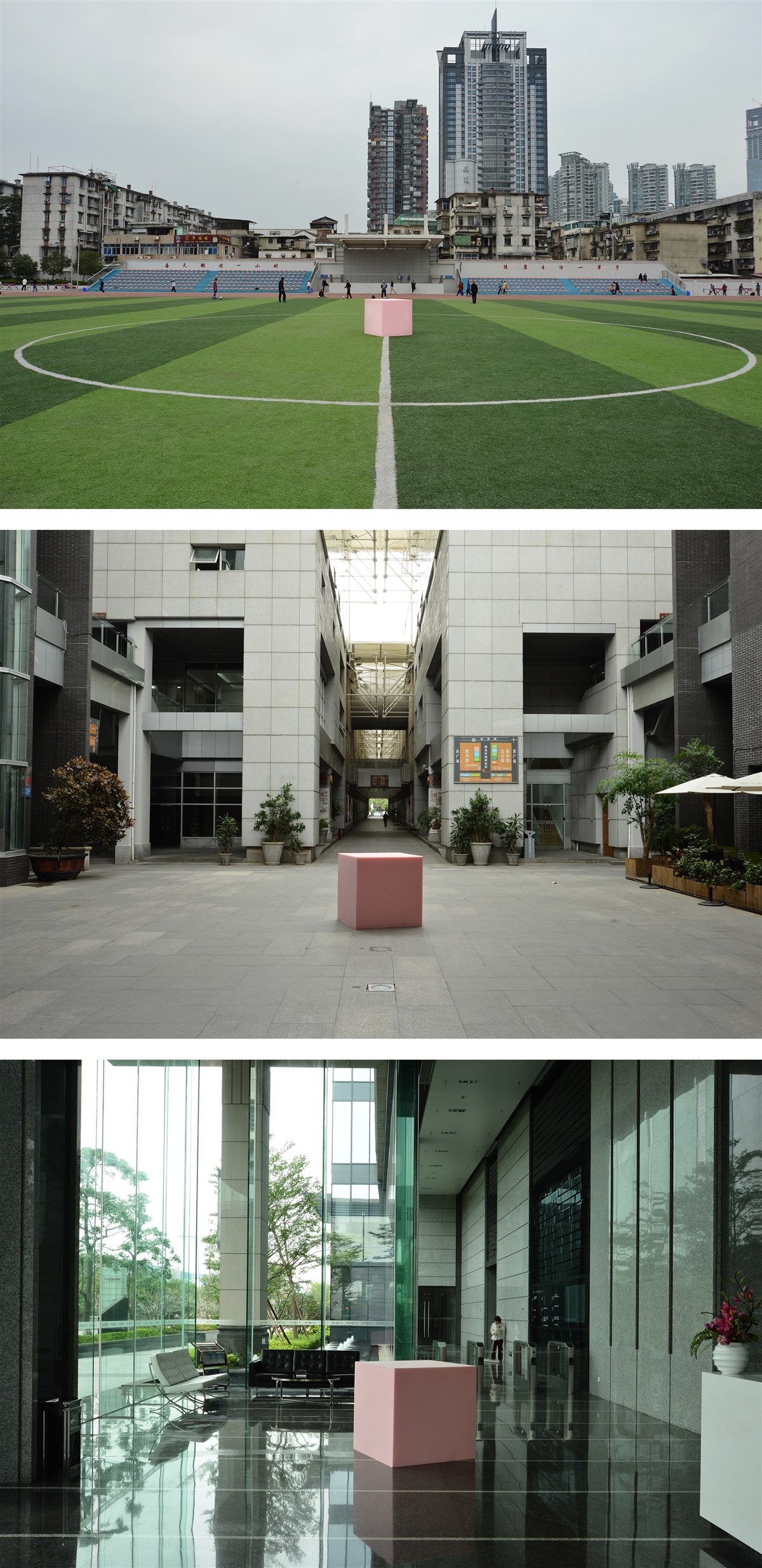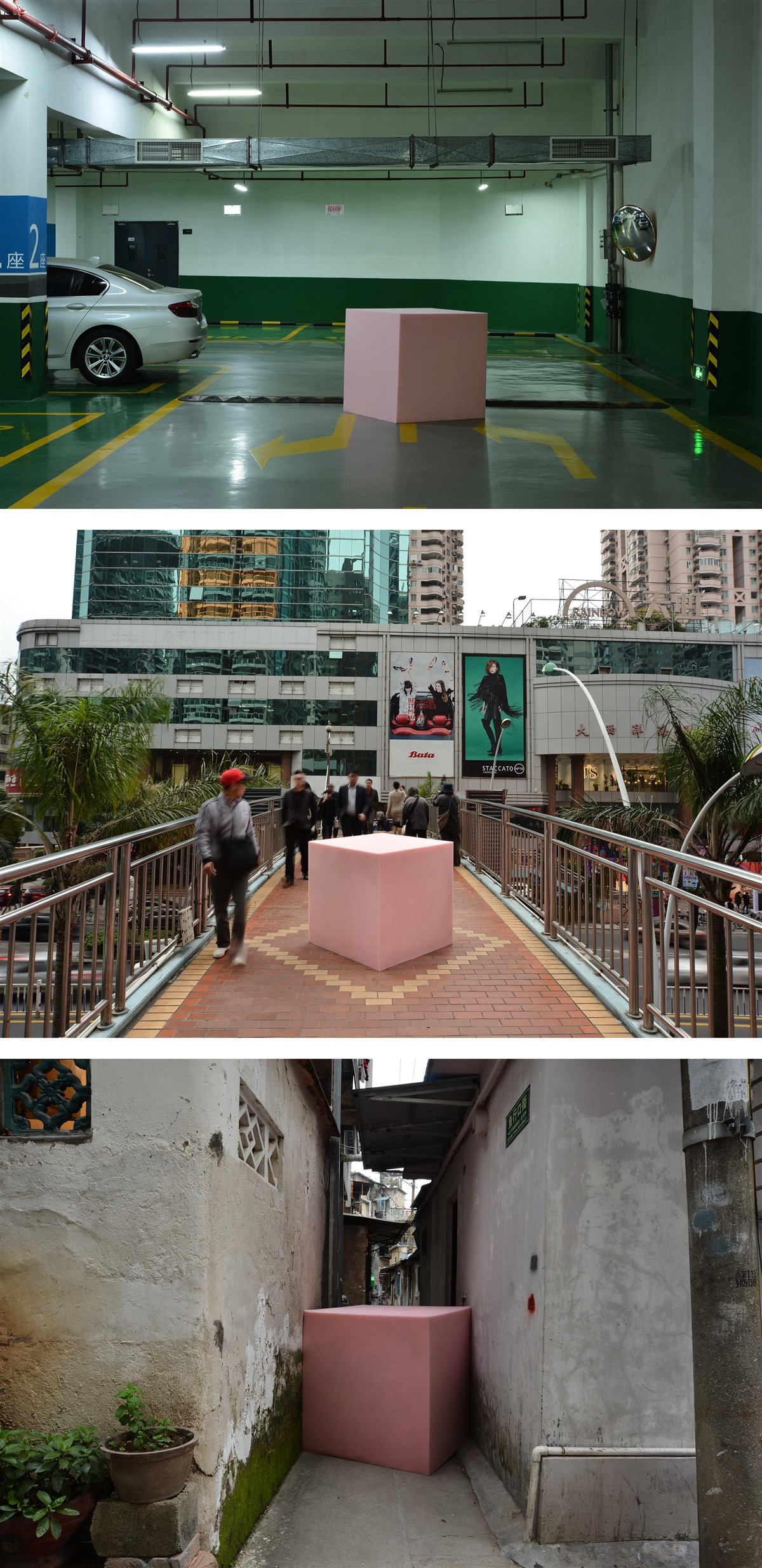-
City Surveying | City Size “1”
城市测量 | City Size “1”
-
The average apartment price near Xiamen railway station was around ¥10000/㎡ in 2011; the average price rose up to ¥35000/㎡ in 2016. 假设,2011年厦门火车站周边的公寓均价是10000元/平方米,2016年,同样是厦门火车站周边的公寓均价涨至35000元/平方米。 -
What happened in these five years are: your(Xiamen citizen’s) income increases; there are more and more supermarkets, stores or shopping centers; there are more and more high-rises; Xiahe road changed from four lanes to six lanes; it is more and more convenient to transit to suburban; the parking fee has risen from ¥5/half day to ¥5/hr; commodity prices, such as pork, coffee, are rising as well. 这5年间发生的事包括:你(厦门居民)的收入提高了;超市、便利店和大型购物中心越来越多;高层建筑越来越多;厦禾路从四车道拓宽至六车道;去岛外的交通越来越发达;附近路面停车费从半天5元提升到每小时5元,猪肉、咖啡等等综合物价也提高了,等等等等…… -

One meter missing in a tall building
在超高层建筑中消失的1米
-
The biggest change of these five years is the price of 1㎡. You become more sensitive to 1㎡ and frequently calculate the ratio of your income and saving. Five years ago, when you have 1 million, you can buy a 100 ㎡ apartment. Excluding pool area, you might get a 25㎡ main bedroom. If you want a bathtub, you can also have a 12 ㎡ bathroom. Now with the same money, you can only buy a 28.57㎡ apartment so that the main bedroom might be even smaller than the bathroom five years ago. Your living space becomes more compact. There would be more functions in 1㎡ area. 这5年的另一大改变是,1平方米对应的数字不断跳动,而你对1平方米越加敏感,经常换算1平方米跟你的收入、存款之间的比例。因为5年前,你如果有100万,可以买100平方米的房子,扣除公摊,可以有一个25平方米的主卧,如果你需要一个小浴缸,可能还可以配备一个12平米的浴室。而现在,同样的100万你买到的是一个28.57平方米的房子,也许卧室还不如5年前那个厕所大。你的生活空间因此不得不更紧凑,1平方米所要承担的内容不得不越来越多。 -
Ignoring the currency inflation and income increasing, we have to pay more on the same living space; in another word, the living space for most people is becoming smaller comparatively. At the same time, during the five years our expending city is becoming more convenient and economy is developing as well. Now our life style changes from small city large home to small home huge city. 扣除通货膨胀率和收入增长水平,我们需要为同样居住空间付出的代价更大了,或者说(大多数人的)居住空间其实越来越小了。但与此同时我们的城市规模则越来越大,5年间发生的事证明我们的城市在便利性和经济规模上都似乎是正向增长。和5年前或更早的厦门相比,我们好像正改变着自己的生活空间样态,从一种小城市大房子的生活,变成小房子大城市的生活。 -

Housing prices in Haicang District, Xiamen City
厦门市海沧区房价
-

Housing prices in Huli District, Xiamen City
厦门市湖里区房价
-

Housing prices in Siming District, Xiamen City
厦门市思明区房价
-

Housing prices in Jimei District, Xiamen City
厦门市集美区房价
-

Housing prices in Tongan District, Xiamen City
厦门市同安区房价
-

Housing prices in Xiangan District, Xiamen City
厦门市翔安区房价
-
On one hand, the high housing price reflects the scarcity of urban resources and radical urbanization, while on the other, along with the high living ( and business) costs that come with it, the unaffordable price prevents talents and capital to flow in. The picture shows the average price per square meter of housing in different districts in Xiamen. 高房价一方面展示着稀缺的城市资源,反应了激进的城市化策略;一方面与它所附带的高生活(及商业)成本一起,抑制着人才和资本的流入。图为厦门各区的每平方米房价均价。 -
Together with some other mathematicians and ecologists, physical scientist Geoffrey West did a research. By collecting and analyzing statistical urban data, such as personal income, influenza rate, suicide rate, cafeterias quantity, pedestrians walking speed, bank saving, GDP and so on, they get a result. Similar to allometric scaling law in nature, if the urban infrastructure increases around 85%, the economic output per head will increase 115%. Another way to say, bigger city has more effective traffic network, more efficient economic activities, lower construction cost and less resource consumption. Thus, they conclude that the larger a city is, the more sustainable development it would get. Like elephant’s metabolism rate is more efficient than a mouse, larger city is more efficient than smaller one. 物理学家 Geoffrey West 与一些数学家、生态学家共同做过一个研究,他们搜集并分析了大量的城市统计数据,如个人收入、流感爆发率、自杀率、咖啡店数目、行人步行速度、银行存款、GDP等等。得出一个类似生物学中的异速生长尺度律的城市规律,即城市(无论自然、历史、地理背景差异多大)规模如果倍增,所需的基础设施和资源量只需增加约85%,而人均经济产出会增加115%。简单来说就是,城市越大意味着社会网路越有效,经济活动越频繁,建设成本和资源消耗(比例)则会降低,他们据此得出的结论是:“城市越大就越好,越可持续”,因为城市就像一个生物体,大象的新陈代谢率一定比老鼠大得多(大过它们的体积比例)。 -
Considering living convenience and quick economic growth in big city, it is no wonder that the apartment price increases from ¥10000/㎡ to ¥35000/㎡. An apartment of ¥35000/㎡ is a choice of balancing location convenience, construction quality, community environment and the city context.(An apartment of the same quality is very different between Xiamen, Nanjing and Zhengzhou.) We can call the urban value as city pool area. Compare to five years ago, we seemingly have more opportunities, more convenience and larger public space. 如果大城市比小城市更好,那么将城市便利性和经济规模的正向增长,作为公寓价格从10000元/平方米涨至35000/平方米的其中一个重要原因,就不难理解。35000元/平方米的公寓,是你对居住地段、建筑品质、小区环境,以及公寓所处城市的一个综合选择(毕竟同样建筑品质的公寓在厦门和在南宁或郑州是不一样的)。我们甚至可以称这种城市价值为“城市公摊”,因为看起来,和5年前相比,我们的城市给予我们这些城市使用者更多的发展机遇、更好的生活机能和更大的公共生活空间。 -
However, is larger city really better than smaller one? 但问题是,大城市真的比较好吗? -

1 cubic meter in different scales of urban space 1
1立方米在不同尺度城市空间中的表现 1
-

1 cubic meter in different scales of urban space 2
1立方米在不同尺度城市空间中的表现 2
-
High housing price follows higher living and commercial cost. As economy grows, from long term perspective, urbanization is not positive to attract more elites, or to bring business diversity and economic vitality. Secondly, we have more shopping malls, schools, hospitals that our life seems more convenient, but because city size is growing, we depend more time on vehicles and have less experience in community life. There are more parks, plazas or larger blocks for public space. Big city creates larger space, which replaces the lively and vigorous small public spaces five years ago. However, are we taking more advantages from this urban pool area? Is the city life more comfortable than five years ago? 高房价带来了更高的生活和商业成本,在经济规模增长的同时,城市扩张对人才流入、商业业态多样性和经济活力的影响,长远来看未必正面。其次,我们有了更多商场、学校、医院,生活看似更便利,但因为城市体量增大,我们不得不耗费更高的时间成本在这种“目的地式“的点对点的出行上,对汽车的依赖增高而小城市的街区体验却降低了;在公共生活空间方面,出现了更多公园、广场,更大的街区。大城市造出了更多大空间,替代了5年前或更早前小城市时代的那些生动的、令人愉悦的小公共空间,但我们更频繁、更愿意使用这些“城市公摊”了吗?或者换句话说,我们的城市比5年前更适合生活吗? -
In the theory of Prof. Geoffrey West, city should be a more efficient biology model rather than a multi-value complex. The 15% power law neglects the stimulation which urbanization brings to people’s consumption. Other than complex human nature, we can not ignore that the essence of city is resident. Geoffrey West教授得出的结论里,城市是一个更经济的生物模型而不是一个多重价值的混合体。15%的幂律忽视了城市扩张对人消费、消耗需求的刺激。但除了人性的复杂,还有一个更重要的问题——城市的本质是人,不是吗? -
Our understanding about urban environment is much less than apartment. We are more carefully reckoning on every 1m, 1㎡ and 1m³. We are more eager to deal with the relationship between living space and ourselves. Relatively, we lost our sensitivity to urban scale. The proportions of your step and the street width, your height and building height, all these are changing during these 5 or 10 years. Don’t you have less constitutional walk than five years ago? Does your kid have the opportunity of playing football around the neighborhood as when you were a kid? The disappearance of living interests and changing of life customs are the results of quick urbanization. 从我们对城市尺度的认识似乎远远不及我们对公寓尺度的认识这点上看,我们也忽视了同样的问题。我们对公寓内的每1米、1平方米、1立方米越来越精打细算,越来越希望处理好居住空间与我们之间的关系,但对所生活的城市的尺度却逐渐失去感受。你的步伐与街道宽度的比例、你的身高与建筑高度的比例,和5年前或10年前相比,都在发生着变化。你是否比5年前更少散步了?你是否很久没有把屁股从驾驶座的皮质座椅挪到公园的长凳上了?你的小孩是否不像你小时候那样在巷子里踢足球了?如果你仔细想想,很多生活习惯的改变和生活乐趣的消失,其实都是这种变化的结果。 -
As a human being, you are paying for city pool area of an elephant. 作为一个人,你正在为大象使用的“城市公摊”买单。 -
Visual Design Yang Lutong
Photographer Xu Xiaodong
Video/Sound Yang Lutong
Writer Wang Qi视觉策划 杨鹿童
摄影 许晓东
视频/声音 杨鹿童
文字 王琦